The History of the Zipper – From Invention to Essential
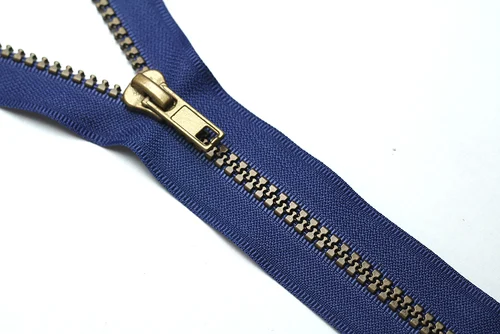
The History of Zipper-From Invention to Essential The Fascinating History of the Zipper: From Invention to Everyday Essential Zippers are so common in our daily lives that we often take them for granted. From clothing to bags and even tents, zippers provide a simple yet effective way to fasten and secure various items. But have you ever wondered how this ingenious invention came to be? Let’s take a journey through the fascinating history of the zipper and discover how it evolved into the essential tool we use today. The Early Attempts: A Struggle for Innovation The story of the zipper begins in the 19th century when inventors were looking for better ways to fasten clothing and accessories. The first known attempt was made in 1851 by Elias Howe, the inventor of the sewing machine. He patented an early version called the “Automatic, Continuous Clothing Closure.” However, Howe never pursued manufacturing or popularizing his invention, leaving the concept largely unnoticed. The First Practical Zipper It wasn’t until 1893 that Whitcomb Judson, an American engineer, developed and patented a device called the “Clasp Locker.” Judson’s design was intended to help people fasten their shoes more easily. He showcased his invention at the 1893 Chicago World’s Fair, but the design was still too complex and unreliable to be widely adopted. The Modern Zipper Takes Shape The true breakthrough came in 1913, when Gideon Sundback, a Swedish-American engineer, improved Judson’s design. Sundback created the “Hookless Fastener,” which used interlocking metal teeth instead of hooks and eyes. This new design was much more reliable and easier to use. In 1917, he patented his invention as the “Separable Fastener.” Sundback’s improved zipper was first used in military gear, particularly for money pouches and flight suits during World War I. The invention gained attention for its practicality and durability. The Zipper Gets Its Name Despite its early use in military applications, the zipper did not receive its famous name until the 1920s. The B.F. Goodrich Company, which used Sundback’s fastener on their new rubber boots, coined the term “zipper” because of the zipping sound it made when being fastened. The catchy name stuck, and soon, more industries began to adopt the invention. The Rise of the Zipper in Fashion By the 1930s, zippers were making their way into clothing, especially men’s trousers and jackets. In 1937, the French fashion industry embraced zippers for men’s pants, calling them a revolutionary improvement over buttons. Soon after, designers began incorporating zippers into dresses, skirts, and children’s clothing. The Zipper Today Today, zippers are made from a variety of materials, including metal, plastic, and nylon, and are used in countless applications. From luggage and sportswear to space suits and medical devices, zippers have become an indispensable part of modern life.
The History and Origin of Hoodies: Who Invented Them and How They Became a Trend
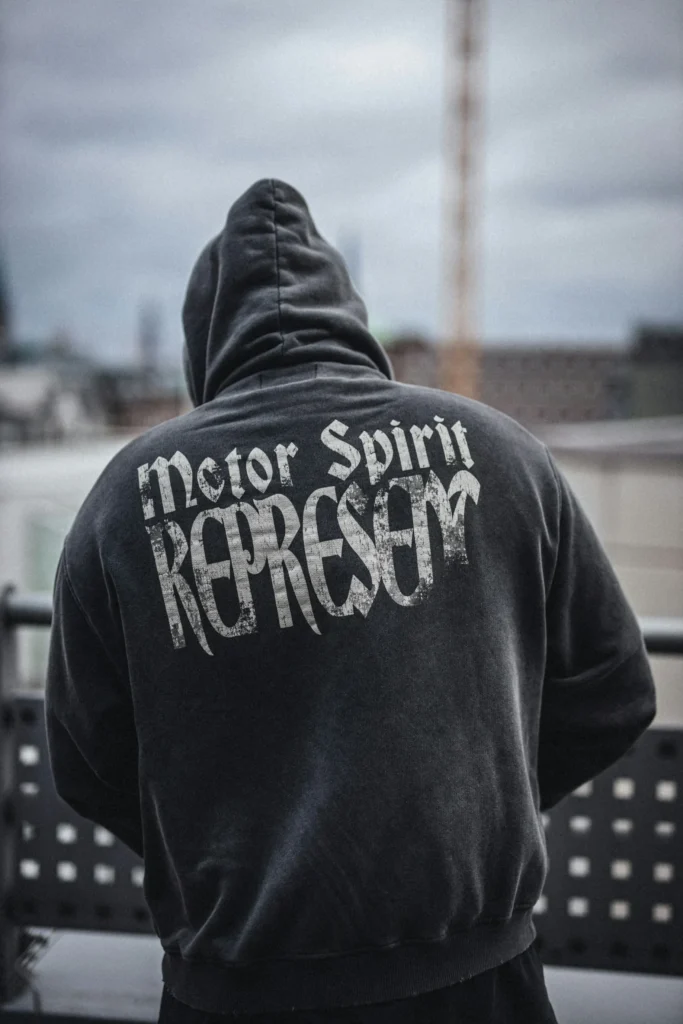
The History and Origin of Hoodies: Who Invented Them and How They Became a Trend Hoodies have become a wardrobe staple, effortlessly blending comfort, style, and functionality. From streetwear to high fashion, they hold a ubiquitous place in global culture. But where did this versatile garment originate? Who invented it, and how did it transform into a trend adored by millions worldwide? Let’s dive deep into the fascinating history of hoodies, uncovering their journey from medieval Europe to the fashion runways of today. The Origin of the Hoodie Medieval Roots The earliest precursor to the hoodie can be traced back to the Middle Ages in Europe. During this period, monks wore tunics with hoods, also known as “hoods” or “cowls,” attached to their robes. Similarly, field workers adopted hooded garments to shield themselves from harsh weather conditions. The First Modern Hoodie The modern hoodie as we know it today was born in the 1930s. The American sportswear company Champion (formerly known as Knickerbocker Knitting Company) is credited with creating the first hooded sweatshirt. Initially designed for laborers working in freezing warehouses in New York, these garments provided warmth and durability. Little did the creators know that this practical invention would evolve into a global fashion phenomenon. How Hoodies Became a Trend The Role of Athletes In the 1930s and 1940s, hoodies began to gain popularity among athletes and gym enthusiasts. Their practicality for outdoor training made them an essential piece of clothing for sports teams. The hooded sweatshirt also became a go-to for college athletes, further embedding itself into American culture. Pop Culture Influence The 1970s marked a turning point for hoodies. This era saw the rise of hip-hop culture and the release of movies like Rocky, where Sylvester Stallone’s character famously donned a hoodie during his iconic training montage. Hoodies became associated with rebellion, individuality, and urban street style. Designer Integration By the 1990s and early 2000s, high-end fashion designers began incorporating hoodies into their collections. Brands like Tommy Hilfiger, Ralph Lauren, and later luxury houses like Gucci and Balenciaga elevated the hoodie’s status from streetwear to high fashion. The rise of athleisure in the 2010s further solidified its place as a versatile garment for both casual and upscale occasions. The Evolution of Hoodie Styles Classic Pullover: The timeless design with no zippers and a kangaroo pocket. Zip-Up Hoodie: Popular for its easy wear and layering capability. Oversized Hoodie: A modern trend for streetwear enthusiasts. Graphic Hoodie: Often adorned with slogans, logos, or artwork. Performance Hoodie: Engineered for sports with moisture-wicking fabrics. FAQ’s Who invented the hoodie? Champion, an American sportswear company, invented the first modern hoodie in the 1930s. Why are hoodies so popular? Hoodies are popular for their comfort, versatility, and ability to adapt to various styles, from casual to high fashion. Are hoodies considered formal or casual? Hoodies are typically considered casual wear, but with the rise of athleisure, they’ve become acceptable in semi-formal settings when styled appropriately. What materials are hoodies made of? Common materials include cotton, polyester, and fleece. High-end hoodies may feature blends with wool or cashmere. How can I style a hoodie? Pair a hoodie with jeans for a casual look or layer it under a blazer for a chic, modern outfit.
DTG Print on t-shirt | apester.in
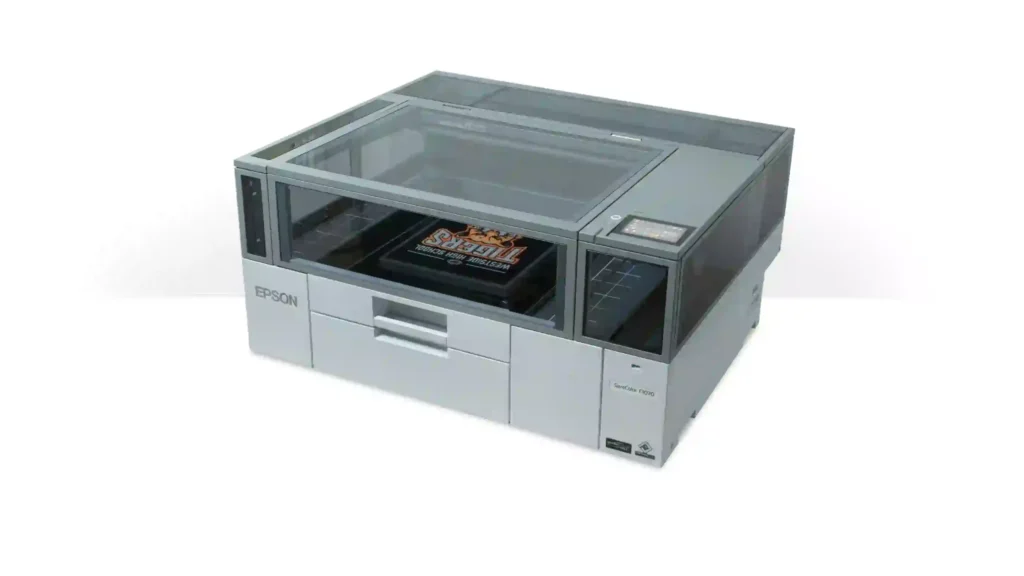
DTG Print on t-shirt | apester.in DTG Printing on T-Shirts: A Comprehensive Guide Direct-to-Garment (DTG) printing has revolutionized the custom apparel industry by offering a precise, vibrant, and durable method for printing designs on t-shirts. Whether you are a small business owner, an artist looking to showcase your work, or someone who loves personalized fashion, understanding DTG printing can help you make informed decisions. This blog delves into the various aspects of DTG printing, including t-shirt types, the printing process, the technology involved, wash care, and the longevity of the prints. What is DTG Printing? Direct-to-Garment (DTG) printing is a process that uses specialized inkjet technology to print designs directly onto fabric. Unlike traditional screen printing, DTG allows for high-resolution, full-color prints without the need for stencils or screens. The process is highly efficient for small batches and intricate designs. T-Shirt Types Suitable for DTG Printing Not all t-shirts are created equal when it comes to DTG printing. The quality of the fabric plays a crucial role in achieving optimal results. Below are the best types of t-shirts for DTG printing: 100% Cotton T-Shirts: Cotton fabric provides excellent ink absorption, resulting in vibrant and long-lasting prints. Ringspun cotton t-shirts are particularly popular for their soft texture and print quality. Cotton-Polyester Blends: Blended t-shirts with a higher cotton percentage (e.g., 80/20 or 90/10) are suitable for DTG printing, though the vibrancy may be slightly reduced compared to 100% cotton. Pre-Treated T-Shirts: Some t-shirts come pre-treated for DTG printing, which enhances the adhesion of the ink and improves print durability. T-Shirt Colors Light-Colored T-Shirts: Easier to print on as they don’t require a white ink base layer. Dark-Colored T-Shirts: Require a white underbase for the design to stand out, which may slightly affect the texture. DTG Printing Process The DTG printing process is simple yet highly precise, involving advanced technology to produce stunning designs. Here’s a step-by-step breakdown: 1. Design Preparation The artwork is prepared using graphic design software. It must be in high resolution (300 DPI or higher) and in a format compatible with the DTG printer, such as PNG or TIFF. Transparent backgrounds are preferred for clean prints. 2. Pre-Treatment (For Dark T-Shirts) Dark t-shirts require pre-treatment to ensure the white ink adheres properly to the fabric. The t-shirt is sprayed with a pre-treatment solution, which is then heat-pressed to dry and flatten the fabric. 3. Printing The t-shirt is loaded onto the printer’s platen. The DTG printer uses water-based inks to print the design directly onto the fabric. The ink is applied in layers, ensuring precise color gradients and intricate details. 4. Curing the Print After printing, the t-shirt undergoes a curing process. This involves using a heat press or conveyor dryer to dry and set the ink into the fabric, ensuring durability and wash resistance. DTG Printing Technology The technology behind DTG printing is what sets it apart from other methods. Here are some key components: Inkjet Technology: DTG printers use inkjet heads to spray water-based inks directly onto the fabric. Water-Based Pigment Inks: These eco-friendly inks are designed for fabric printing, providing vibrant colors and smooth finishes. Pre-Treatment Solutions: Enhance ink adhesion, especially on dark garments. Heat Press Machines: Used for curing the ink and pre-treatment solutions to lock the design into the fabric. Popular DTG printer brands include Epson, Brother, and Kornit, each offering unique features for different business needs. Wash Care for DTG Printed T-Shirts Proper wash care ensures the longevity of DTG prints. Follow these guidelines to keep your t-shirts looking fresh: Turn Inside Out: Always turn the t-shirt inside out before washing to protect the print. Use Cold Water: Wash in cold water to prevent ink fading. Mild Detergent: Use a mild, non-abrasive detergent. Avoid Bleach: Bleach can damage the print and fabric. Gentle Cycle: Wash on a gentle cycle to minimize friction. Air Dry: Air drying is preferred over machine drying. If using a dryer, opt for a low-heat setting. Ironing: Avoid ironing directly on the print. If needed, place a cloth over the design. How Long Do DTG Prints Last? The lifespan of a DTG print largely depends on the quality of the printing process, the type of fabric, and how well the garment is cared for. On average, DTG prints can last 50-70 washes before noticeable fading begins. Following proper wash care can significantly extend the durability of the print.
Digital Fashion: Virtual Avatars & Models Taking Over | apester.in
Digital Fashion: Virtual Avatars & Models Taking Over | apester.in Introduction: The Rise of Digital Fashion In today’s rapidly evolving technological landscape, digital fashion is emerging as a revolutionary concept that is redefining the boundaries of creativity, innovation, and commerce within the fashion industry. As society shifts further into the digital age, the notion of clothing and self-expression has expanded beyond the physical world to embrace virtual avatars, digital models, and immersive online platforms. The fusion of fashion and technology has set the stage for a paradigm shift where the lines between reality and digital artistry blur, creating unprecedented opportunities for brands, designers, and consumers alike. What Is Digital Fashion? At its core, digital fashion refers to clothing that exists exclusively in a digital format. These garments are designed using advanced software tools, enabling creators to produce intricate and hyper-realistic designs without the constraints of physical production. Unlike traditional apparel, digital clothing can be purchased, worn by virtual avatars, or showcased on social media platforms without ever touching a sewing machine. This groundbreaking concept has gained traction with the rise of the metaverse, NFTs (non-fungible tokens), and the increasing popularity of virtual worlds. Key Characteristics of Digital Fashion Sustainability: Since digital garments don’t require physical materials, they offer a sustainable alternative to traditional fashion, minimizing waste and reducing the environmental impact of the industry. Infinite Creativity: Designers have complete freedom to experiment with colors, textures, and patterns that may not be feasible in the physical world. Global Accessibility: Digital fashion breaks down barriers, allowing consumers worldwide to access exclusive designs instantly. Customization and Personalization: Virtual clothing offers users unparalleled opportunities to express their individuality through unique, tailor-made designs. The Growing Role of Virtual Avatars in Digital Fashion Virtual avatars are digital representations of individuals used across gaming, social media, and metaverse platforms. They have become central to the digital fashion movement, serving as a canvas for showcasing virtual garments. With platforms like Decentraland, The Sandbox, and Roblox, users can dress their avatars in designer digital wear, turning virtual spaces into bustling fashion runways. Why Virtual Avatars Are Transforming Fashion Enhanced Self-Expression: Virtual avatars empower users to experiment with styles that may not be practical or socially accepted in real life. Monetization Opportunities: Brands can sell exclusive digital collections to avatar owners, opening up new revenue streams. Interactive Experiences: Virtual fashion shows and digital pop-ups allow brands to engage with audiences on an immersive level. Digital Models: The Future of the Fashion Industry Alongside virtual avatars, digital models are reshaping the traditional modeling industry. These hyper-realistic, computer-generated individuals are being used in ad campaigns, runway shows, and promotional content. Brands such as Balmain and Louis Vuitton have already embraced digital models, signaling a shift toward a new era of fashion marketing. Advantages of Digital Models Cost-Effective Solutions: Digital models eliminate the logistical challenges and costs associated with human models, such as travel, accommodation, and scheduling. 24/7 Availability: Unlike their human counterparts, digital models are always available, ensuring quicker turnaround times for campaigns. Endless Possibilities: Digital models can effortlessly adapt to any concept, location, or aesthetic, offering unparalleled versatility. The Role of NFTs in Digital Fashion Non-fungible tokens (NFTs) have become a driving force behind the digital fashion revolution. By tokenizing virtual garments, designers and brands can create exclusive, traceable, and tradable digital assets. These NFTs often serve as collectibles or functional clothing items for use in virtual environments. How NFTs Are Revolutionizing Digital Fashion Digital Ownership: NFTs enable consumers to truly own their digital clothing, ensuring authenticity and uniqueness. Resale Opportunities: Virtual garments can be bought and sold on NFT marketplaces, fostering a vibrant secondary market. Collaboration with Artists: Designers are teaming up with digital artists to produce limited-edition NFT collections, adding an artistic dimension to fashion. Digital Fashion in the Metaverse The metaverse is a virtual universe that combines augmented reality (AR), virtual reality (VR), and blockchain technology to create immersive, interconnected experiences. Digital fashion is playing a pivotal role in shaping this new frontier, as brands and consumers alike explore the possibilities of virtual living. Major Fashion Initiatives in the Metaverse Virtual Fashion Shows: Leading fashion houses are hosting runway events in virtual environments, offering global audiences an interactive experience. Branded Virtual Stores: Companies like Gucci and Burberry have established digital stores in the metaverse, enabling users to purchase exclusive virtual items. Collaborations with Gaming Platforms: Partnerships with games like Fortnite and Animal Crossing allow players to dress their avatars in branded digital wear, merging gaming culture with high fashion. Benefits of Digital Fashion for Brands and Consumers The rise of digital fashion presents numerous advantages for both businesses and end users: For Brands Enhanced Reach: Digital collections can attract tech-savvy audiences who prioritize innovation. Reduced Production Costs: Virtual clothing eliminates material costs and simplifies logistics. Data Insights: Brands can collect valuable data on consumer preferences and engagement through digital platforms. For Consumers Affordability: Digital garments are often more affordable than physical alternatives, making high fashion accessible to a broader audience. Eco-Friendly Choices: Virtual fashion aligns with the values of environmentally conscious consumers. Immersive Experiences: Users can enjoy engaging interactions with brands through AR and VR. Challenges Facing Digital Fashion While the digital fashion industry holds immense promise, it is not without its challenges: Technical Limitations: High-quality digital clothing requires advanced hardware and software capabilities, which may not be accessible to everyone. Consumer Adoption: Some audiences remain skeptical about the value of virtual garments and the concept of owning digital assets. Cybersecurity Risks: The reliance on blockchain and NFTs raises concerns about data security and digital theft. Intellectual Property Issues: The digital nature of virtual clothing makes it susceptible to unauthorized duplication and plagiarism. The Future of Digital Fashion As digital fashion continues to evolve, its potential applications extend far beyond virtual avatars and digital models. We anticipate advancements in holographic displays, wearable tech, and augmented reality shopping experiences. With the integration of artificial intelligence, designers may even leverage machine learning to create dynamic garments that adapt to
Why Varsity Jackets Are More Than Just a Trend
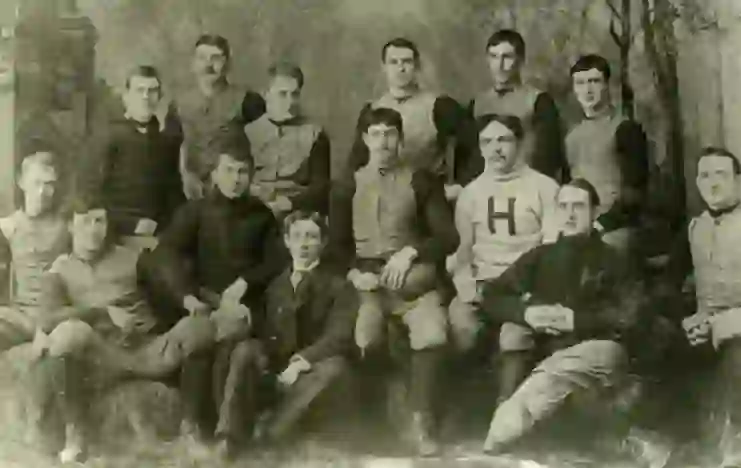
Why Varsity Jackets Are More Than Just a Trend The Timeless Appeal of Varsity Jackets: History, Origin, and Present Trends The History of Varsity Jackets Varsity jackets, also known as letterman jackets, are more than just garments; they represent a legacy that dates back over a century. Their origin can be traced to 1865 at Harvard University, where they first appeared as part of the college baseball team’s uniform. These early versions were simple wool sweaters with a large “H” stitched onto them. Players who demonstrated exceptional performance were awarded the privilege of wearing these “lettered” garments, marking the birth of the letterman tradition. By the early 20th century, varsity jackets evolved into the now-iconic wool bodies with leather sleeves design. This design became synonymous with team pride and personal achievement, extending its reach to high school and college sports teams across the United States. The tradition of awarding varsity jackets to athletes was firmly entrenched by the 1930s, turning them into a coveted symbol of both athleticism and prestige. The Evolution of Varsity Jackets While originally reserved for sports teams, varsity jackets began to transcend their athletic roots in the post-war era. During the 1950s and 1960s, they became a part of the American youth culture, worn by students as a fashion statement. The jackets’ unique design—characterized by bold lettering, striped ribbed cuffs, and contrasting materials—embodied the spirit of the era. Hollywood further cemented the varsity jacket’s status as an emblem of youthful rebellion. Movies like “Grease” and TV shows like “Happy Days” showcased varsity jackets as a staple of teenage wardrobes, blending athleticism with a touch of cool. By the 1980s and 1990s, the jackets were no longer limited to athletes; they were embraced by musicians, artists, and style enthusiasts, making their mark on pop culture. Present Trends in Varsity Jackets In recent years, varsity jackets have undergone a remarkable revival, emerging as a key player in the world of streetwear and high fashion. Their versatility and timeless design have made them a favorite among designers and fashionistas alike. Here’s how varsity jackets are making waves today: 1. The Rise of Streetwear Varsity Jackets Varsity jackets have become a cornerstone of streetwear fashion, blending nostalgic charm with contemporary aesthetics. Brands like Supreme, Off-White, and Fear of God have incorporated varsity jackets into their collections, adding bold graphics, unique colorways, and premium materials. These modern iterations have elevated the jacket from a casual piece to a luxury item. 2. Customization and Personalization One of the most appealing aspects of varsity jackets today is the ability to customize them. From embroidered names and logos to bespoke patches and color combinations, customization has made varsity jackets more personal than ever. This trend resonates with individuals and brands looking to express their identity through fashion. 3. Gender-Neutral Appeal Once considered a male-dominated style, varsity jackets have embraced a gender-neutral identity. With oversized fits and unisex designs, they have become a staple for everyone. Celebrities like Rihanna, Justin Bieber, and Zendaya have been spotted rocking varsity jackets, further boosting their popularity across genders. 4. Sustainable Varsity Jackets As sustainability takes center stage in the fashion industry, eco-conscious brands are reimagining varsity jackets with sustainable materials. From recycled wool to vegan leather, these options cater to environmentally conscious consumers without compromising on style or quality. 5. The Influence of High Fashion Luxury fashion houses like Gucci, Louis Vuitton, and Saint Laurent have redefined varsity jackets, incorporating intricate embroidery, metallic accents, and high-quality fabrics. These high-fashion versions have turned varsity jackets into a statement piece on runways and red carpets. Styling Varsity Jackets in Modern Times The versatility of varsity jackets makes them a favorite for styling across seasons and occasions. Here are some popular ways to wear them: Casual Cool: Pair a varsity jacket with jeans, a graphic tee, and sneakers for an effortlessly cool look. Streetwear Vibes: Combine an oversized varsity jacket with joggers and chunky sneakers for a trendy streetwear outfit. Smart-Casual: Layer a varsity jacket over a button-down shirt and chinos for a polished yet relaxed ensemble. Sporty Chic: Wear it with leggings and a crop top for a sporty, athleisure-inspired style. The Global Impact of Varsity Jackets Varsity jackets have transcended their American roots, becoming a global fashion phenomenon. From Tokyo to Paris, they are embraced by diverse cultures and subcultures, each adding their unique twist. In Asia, varsity jackets are often styled with a preppy aesthetic, while in Europe, they are paired with avant-garde pieces for a high-fashion look. The Future of Varsity Jackets The enduring appeal of varsity jackets lies in their ability to evolve while staying true to their origins. As technology and fashion intersect, we can expect to see innovations like smart varsity jackets with integrated tech features, such as temperature control and fitness tracking. At the same time, the nostalgia-driven trend shows no signs of waning. Varsity jackets will continue to be a canvas for self-expression, celebrating individuality while honoring their rich heritage.
How oversized T-shirt came in Trend?
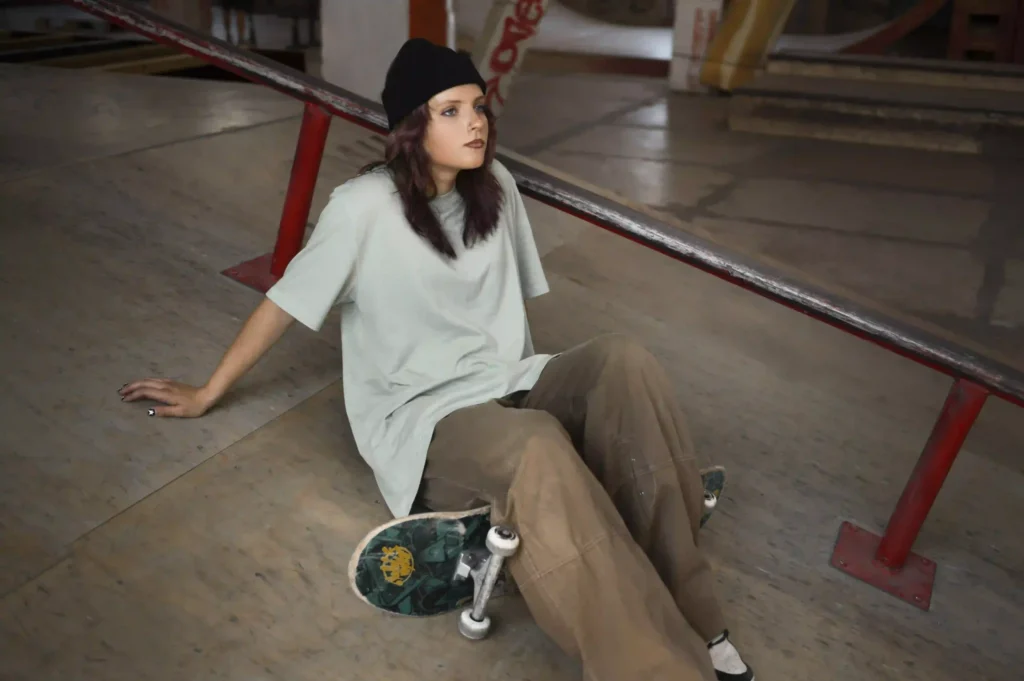
How Oversized T-shirt Came in Trend Oversized T-Shirts: How They Became a Global Trend In recent years, oversized t-shirts have become a must-have staple in the wardrobes of fashion enthusiasts worldwide. Their rise to popularity can be traced to evolving fashion trends, the influence of streetwear culture, and a desire for both comfort and style. But how exactly did oversized t-shirts come into vogue? This blog explores the history, reasons behind their popularity, styling tips, and why this trend is here to stay. The Origins of Oversized T-Shirts Oversized clothing has been around for decades, but its adoption as a fashion statement began in the late 20th century. During the 1980s and 1990s, hip-hop culture played a significant role in popularizing oversized apparel. Artists and influencers embraced baggy clothing as a form of self-expression, challenging traditional norms of tailored and fitted fashion. Oversized t-shirts, in particular, became a key element of this movement, symbolizing individuality and rebellion. Another pivotal moment came with the rise of skateboarding culture in the 90s. Skaters preferred loose and oversized clothing for ease of movement and practicality. The t-shirt’s relaxed fit complemented the laid-back and nonconformist ethos of the community, further cementing its place in alternative fashion. Why Oversized T-Shirts Became Popular Several factors contributed to the widespread appeal of oversized t-shirts: 1. Comfort Meets Style The oversized t-shirt combines the best of both worlds: it’s incredibly comfortable to wear while still being effortlessly stylish. The loose fit allows for unrestricted movement, making it a practical choice for everyday wear. 2. The Influence of Streetwear Streetwear brands like Supreme, Off-White, and Fear of God have played a major role in promoting oversized silhouettes. These brands often feature oversized t-shirts in their collections, blending high-fashion elements with casual aesthetics. 3. Celebrity Endorsements Celebrities and influencers have been instrumental in bringing oversized t-shirts into mainstream fashion. Icons like Kanye West, Billie Eilish, and Hailey Bieber frequently sport oversized tees, making them aspirational for their followers. 4. Gender-Neutral Appeal Oversized t-shirts have a universal appeal that transcends gender. Their versatility allows them to be styled in countless ways, making them a favorite among men and women alike. 5. Nostalgia for 90s Fashion The resurgence of 90s-inspired fashion has brought oversized clothing back into the spotlight. Millennials and Gen Z, in particular, have embraced the trend as a way to channel vintage vibes with a modern twist. How to Style Oversized T-Shirts One of the best things about oversized t-shirts is their versatility. Here are some popular ways to style them: 1. Casual and Relaxed Pair your oversized t-shirt with skinny jeans or leggings for a comfortable yet stylish look. Add sneakers to complete the outfit. 2. Layered Look Use an oversized t-shirt as a layering piece by wearing it over a turtleneck or under a jacket. This adds depth and dimension to your outfit. 3. Tucked In Tuck an oversized t-shirt into high-waisted jeans or shorts for a more structured appearance. This creates a balanced silhouette. 4. Dress it Up For a chic twist, wear an oversized t-shirt as a dress. Pair it with a belt to cinch the waist and add ankle boots or heels for a polished look. 5. Streetwear Vibes Go for a streetwear-inspired outfit by pairing your oversized t-shirt with baggy pants, chunky sneakers, and a bucket hat. The Oversized T-Shirt Trend in Pop Culture Oversized t-shirts have found their way into music videos, fashion shows, and social media platforms. The rise of platforms like Instagram and TikTok has amplified the trend, with influencers showcasing creative ways to style oversized tees. The hashtag #OversizedTShirt has garnered millions of views, highlighting its global appeal. Sustainability and Oversized T-Shirts As consumers become more conscious of sustainable fashion, oversized t-shirts have emerged as a practical choice. Their durability and timeless design make them a long-lasting wardrobe staple. Additionally, many brands now offer oversized tees made from organic or recycled materials, catering to environmentally conscious shoppers. Why the Oversized T-Shirt Trend is Here to Stay The oversized t-shirt trend shows no signs of slowing down. Its blend of comfort, versatility, and style ensures that it remains relevant in an ever-changing fashion landscape. As designers continue to innovate with cuts, fabrics, and prints, oversized t-shirts will likely evolve to meet the needs of future generations.
Top Fashion Trends of 2024: What’s Hot in Style This Year
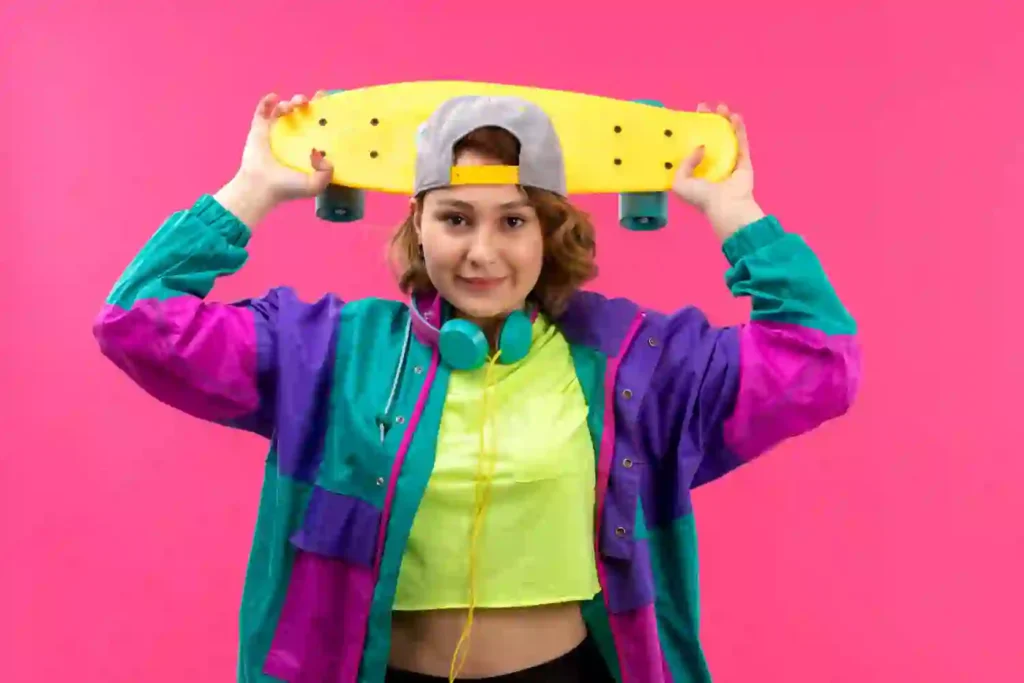
Top Fashion Trends of 2024: What’s Hot in Style This Year. Fashion is ever-evolving, and 2024 is no exception! From bold statements to sustainable choices, this year’s trends are all about embracing individuality, comfort, and environmental consciousness. Whether you’re revamping your wardrobe or seeking inspiration, these top fashion trends will keep you in style. Read on to discover the hottest trends in fashion for 2024 and how to incorporate them into your wardrobe. 1. Oversized Everything Oversized clothing continues to dominate the fashion world. From baggy jeans to oversized hoodies and blazers, this trend emphasizes comfort and effortless style. The key is to balance the look by pairing oversized pieces with fitted garments. For example, pair a chunky oversized sweater with slim-fit trousers or leggings. Keywords: Oversized clothing 2024, baggy jeans trend, oversized hoodies. 2. Y2K Revival The early 2000s are back with a modern twist. Think baby tees, low-rise jeans, metallic accessories, and butterfly motifs. This nostalgic trend has taken over runways and streetwear alike, offering a playful and youthful vibe. Keywords: Y2K fashion, 2000s style comeback, Y2K trends 2024. 3. Sustainable Fashion Eco-conscious choices are no longer a niche but a necessity. Brands are focusing on sustainable fabrics, ethical practices, and upcycled designs. Shoppers are leaning towards timeless pieces made from organic cotton, recycled polyester, and biodegradable materials. Supporting slow fashion and thrifting are also gaining momentum. Keywords: Sustainable fashion 2024, eco-friendly clothing, ethical fashion trends. 4. Bold Colors and Neon Accents Bright and bold colors are making a splash in 2024. Neon green, electric blue, and fiery red are some of the shades to watch out for. These colors are perfect for making a statement, whether it’s through accessories, outerwear, or an entire outfit. Keywords: Bold colors 2024, neon fashion trend, bright outfits 2024. 5. Streetwear Meets Tailoring The blend of streetwear and tailoring is redefining fashion norms. This trend combines the structure of tailored suits with the casual elements of streetwear. For example, oversized blazers paired with sneakers or cargo pants with a crisp button-down shirt create a chic yet relaxed look. Keywords: Streetwear tailoring, casual suits trend, urban chic fashion. 6. Maximalist Prints and Patterns It’s time to embrace bold patterns and mix-and-match prints. Think animal prints, geometric shapes, and psychedelic designs. Don’t be afraid to layer prints or combine them with bright colors for a head-turning outfit. Keywords: Maximalist prints, bold patterns 2024, mix-and-match fashion. 7. Techwear and Utility Functional fashion is on the rise with techwear and utility-inspired outfits. Multi-pocket vests, cargo pants, and waterproof jackets combine practicality with style. These pieces are perfect for an urban, on-the-go lifestyle. Keywords: Techwear fashion 2024, utility clothing, functional fashion trends. 8. Sheer Fabrics Sheer clothing is having a moment in 2024. Dresses, tops, and skirts made from transparent fabrics like organza and tulle add a touch of ethereal elegance. Layering sheer pieces over solid-colored garments creates a dynamic and modern look. Keywords: Sheer fabrics trend, transparent clothing, ethereal fashion. 9. Statement Accessories This year, accessories are bigger and bolder than ever. Oversized bags, chunky jewelry, and dramatic sunglasses are must-haves. These statement pieces can elevate even the simplest outfit. Keywords: Statement accessories 2024, bold jewelry, oversized bags trend. 10. Gender-Fluid Fashion 2024 celebrates the breakdown of traditional gender norms in fashion. Unisex clothing and androgynous styles are gaining popularity, allowing individuals to express themselves freely. From oversized suits to flowy silhouettes, gender-fluid fashion embraces inclusivity. Keywords: Gender-fluid fashion, unisex clothing 2024, androgynous styles. 11. Coastal Grandma Aesthetic This trend takes inspiration from breezy coastal vibes and timeless elegance. Think linen shirts, wide-brimmed hats, and neutral tones. The Coastal Grandma aesthetic is perfect for relaxed summer days. Keywords: Coastal grandma trend, breezy summer fashion, neutral tones 2024. 12. Metallic Finishes Shimmer and shine are in! Metallic fabrics and finishes are being used in everything from dresses to shoes. These pieces add a futuristic touch to your wardrobe, making them perfect for parties and evening wear. Keywords: Metallic fashion 2024, futuristic clothing, shiny outfits trend. 13. Denim Reinvented Denim never goes out of style, but 2024 is all about experimentation. Acid washes, patchwork designs, and denim-on-denim outfits are taking center stage. Don’t shy away from bold denim choices to make a statement. Keywords: Denim trends 2024, acid wash jeans, patchwork denim. 14. Layering as an Art Form Layering isn’t just for winter anymore. Creative layering techniques, such as combining dresses with pants or layering shirts over turtlenecks, are becoming a fashion staple. This trend allows for endless customization and self-expression. Keywords: Layering fashion 2024, creative outfits, mix-and-match layers. 15. Athleisure 2.0 Athleisure is evolving with a focus on sleek designs and high-performance fabrics. Tracksuits, bike shorts, and sporty crop tops are being paired with more formal pieces, creating a versatile and polished look. Keywords: Athleisure 2024, sporty-chic outfits, high-performance clothing.
All about GTA 6
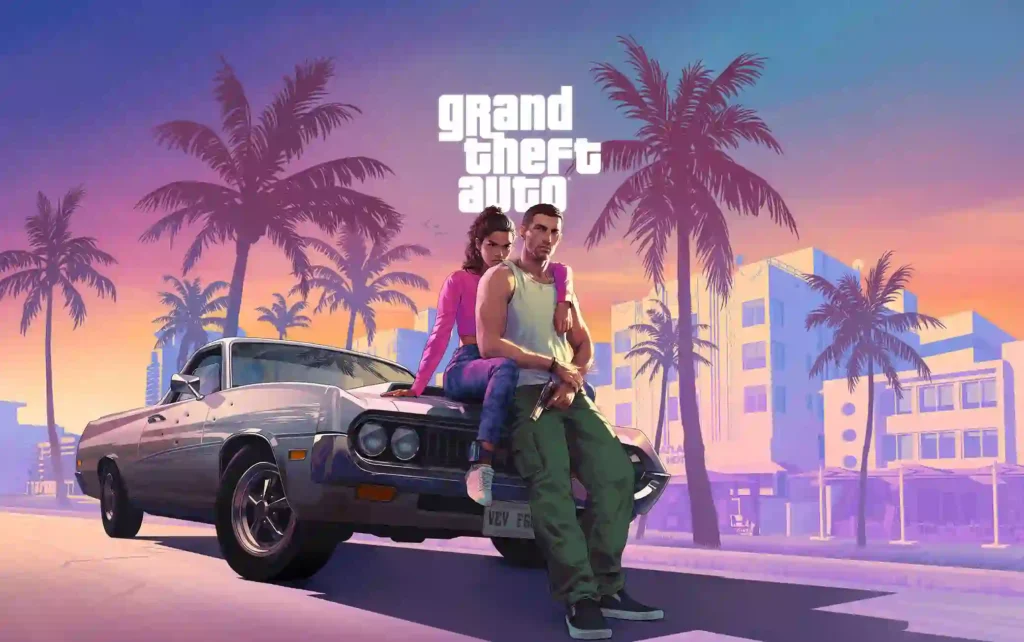
Grand Theft Auto (GTA) enthusiasts and gaming communities worldwide are buzzing with anticipation as they eagerly await the arrival of the highly anticipated GTA 6. Rockstar Games, the brilliant minds behind the iconic GTA series, has managed to captivate gamers with each release, setting new benchmarks in the open-world gaming genre. In this blog, we delve into the latest rumors, expectations, and the general excitement surrounding GTA 6. CLICK TO WATCH OFFICIAL TRAILER Rumors and Speculations: The gaming community has been abuzz with rumors surrounding GTA 6, and Rockstar Games has been notoriously tight-lipped about any official details. However, leaks, speculations, and insider information have fueled the excitement. Diverse Locations: Rumors suggest that GTA 6 will feature multiple locations, possibly expanding beyond a single city. This would mark a departure from the single-city focus of previous titles, offering players a more expansive and diverse gaming experience. Time Period Setting: Speculations about the time period setting of GTA 6 range from the 1970s to the modern-day era. Some believe that Rockstar might explore multiple time periods within the game, creating a dynamic and evolving narrative. Protagonist(s) and Storyline: The identity of the main protagonist remains a mystery, but rumors indicate that players may control multiple characters throughout the game. The storyline is expected to be immersive and rich in detail, as is characteristic of Rockstar’s storytelling prowess. Next-Gen Graphics and Gameplay: With the advent of next-gen gaming consoles, expectations are high for cutting-edge graphics and immersive gameplay. GTA 6 is anticipated to leverage the power of these consoles to deliver a visually stunning and technically advanced gaming experience. Community Expectations: The GTA community, known for its passionate fanbase, has a set of expectations that it hopes GTA 6 will meet or exceed. Innovative Gameplay Mechanics: Fans are eager to see innovative gameplay mechanics that push the boundaries of open-world gaming. This includes realistic AI, enhanced physics, and a dynamic environment that responds to player actions. Expansive Multiplayer Features: GTA Online has been a massive success, and players are excited about the potential improvements and expansions to the online multiplayer experience. Enhanced customization options, new activities, and a seamless transition between single-player and multiplayer modes are among the expectations. Attention to Detail: Rockstar Games is renowned for its attention to detail, and fans expect nothing less from GTA 6. From realistic cityscapes to intricate character animations, the devil is in the details, and players are eager to explore a world that feels alive and authentic. Conclusion: As the gaming world holds its breath for the official announcement of GTA 6, the rumors, speculations, and community expectations continue to build the excitement to unprecedented levels. Rockstar Games has a history of delivering groundbreaking titles, and GTA 6 appears poised to raise the bar once again, promising an immersive and thrilling gaming experience for fans old and new. Until the official release, the gaming community remains on the edge of their seats, eagerly anticipating the next chapter in the Grand Theft Auto saga.
Winter wear style guide 2023
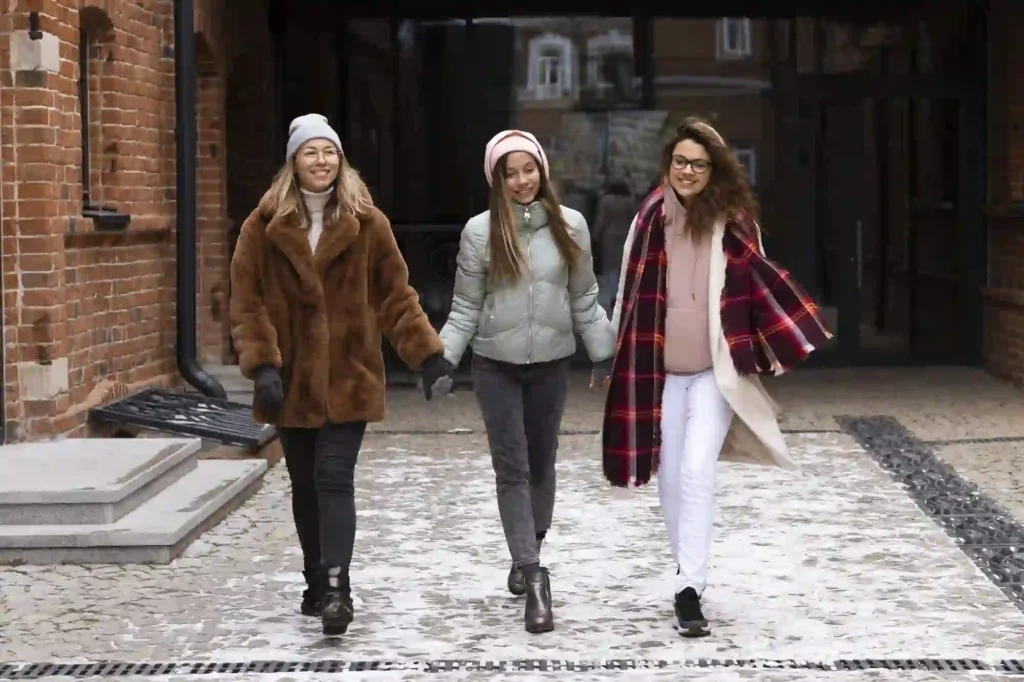
As the temperature drops and the air becomes crisp, it’s time to revamp your wardrobe with winter essentials that not only keep you warm but also make a style statement. Winter wear is not just about functionality; it’s about embracing the season with comfort and flair. Let’s explore the various types of winter wear that will keep you snug and stylish during the frosty months. Cozy Sweaters: Sweaters are a classic winter wardrobe staple. From chunky cable-knit sweaters to lightweight cashmere pullovers, there’s a style for every occasion. Pair them with jeans for a casual look or layer over a dress for a more polished ensemble. Turtlenecks, crewnecks, and V-necks offer a variety of options to suit your personal style. Versatile Jackets and Coats: Investing in a good-quality winter jacket or coat is crucial for staying warm in chilly weather. Choose from a range of options, including puffer jackets, parkas, wool coats, and faux fur jackets. Consider the insulation, waterproof features, and style to find the perfect outerwear for your needs. A stylish coat not only adds warmth but also elevates your overall look. Layered Fashion with Cardigans: Cardigans are a versatile layering piece that adds warmth without sacrificing style. Whether you opt for a long, flowing cardigan or a cropped, fitted style, these pieces are perfect for creating chic and comfortable layered outfits. Throw a cardigan over a blouse or a T-shirt for an effortlessly stylish winter look. Insulating Base Layers: Base layers are designed to keep you warm by trapping heat close to your body. Thermal tops and bottoms made from materials like merino wool or synthetic fibers provide excellent insulation without adding bulk. These are ideal for outdoor activities such as skiing or hiking, as they wick away moisture and keep you comfortable in cold conditions. Stylish Scarves and Shawls: Accessorize your winter outfits with scarves and shawls to add a touch of elegance and warmth. From chunky knit scarves to lightweight cashmere shawls, there are endless options to suit your style. Experiment with different textures, patterns, and colors to elevate your winter look. Comfortable Gloves and Mittens: Protect your hands from the biting cold with a stylish pair of gloves or mittens. Choose insulated, waterproof options for outdoor activities, and opt for softer materials like wool or cashmere for everyday wear. Don’t forget touchscreen-compatible gloves to stay connected while keeping your hands warm. Trendy Beanies and Hats: Keep your head warm and stylish with a trendy beanie or hat. From slouchy beanies to classic fedoras, there are numerous options to suit your taste. Opt for a hat with a brim to shield your face from cold winds or choose a classic beanie for a casual and cozy vibe. Conclusion: Winter wear is not just about bundling up; it’s an opportunity to showcase your style while staying warm and comfortable. Invest in quality pieces that not only protect you from the cold but also reflect your personal taste. Whether you’re a fan of classic knits, trendy outerwear, or cozy accessories, there’s a winter wardrobe for everyone. So, embrace the chill and step out in confidence with these essential winter wear pieces.
Top 10 sustainable clothing projects 2023
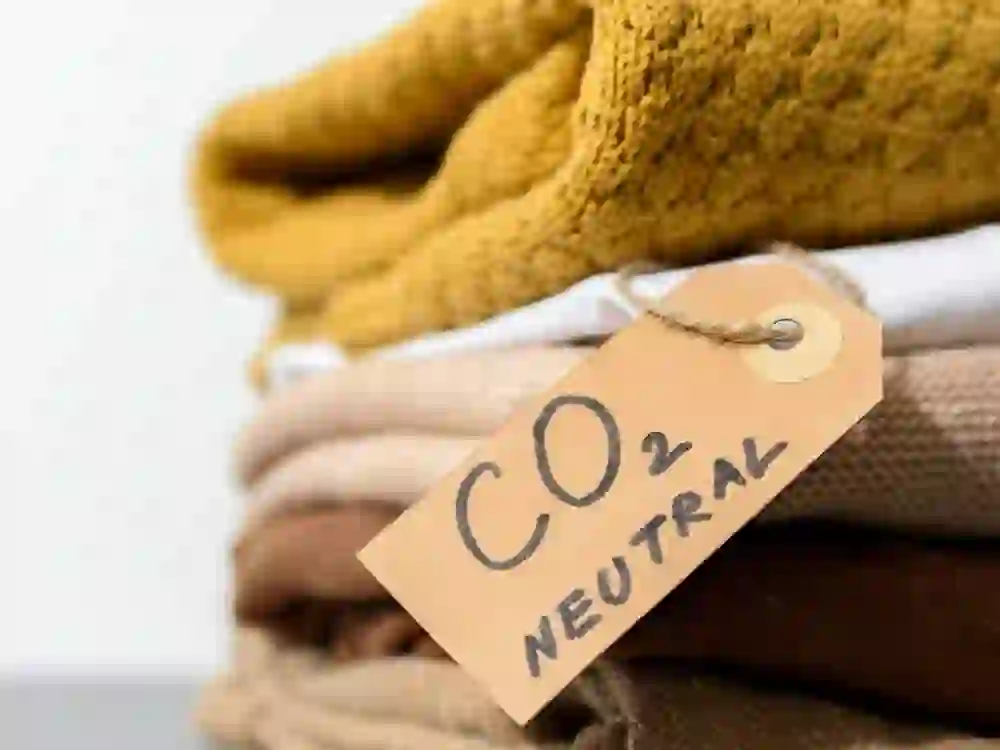
In a world where sustainability is not just a buzzword but a necessity, the fashion industry is undergoing a transformative revolution. Forward-thinking designers and innovative projects are leading the charge, introducing sustainable practices that prioritize both style and the planet. Let’s dive into the top 10 sustainable clothing projects of 2023 that are reshaping the future of fashion. 1.The Renewal Workshop: Mission: Extending the lifespan of clothing. How: Repairs, upcycling, and reselling used garments to reduce textile waste. website – https://www.bleckmann.com/our-approach/sustainability 2.Bio2x by Fortum Mission: Biomass as raw material How: Converting Wheat Straws and bamboo to sustainable fabric. website – https://www.fortum.com/products-and-services/biobased-solutions/bio2x/biomass-raw-material 3.Evrnu’s NuCycl™ Technology: Mission: Closing the textile loop. How: Using innovative technology to recycle old clothing into new, high-quality fibers. website- https://www.evrnu.com/nucycl 4.Patagonia’s Worn Wear: Mission: Promoting a circular economy for outdoor clothing. How: Encouraging customers to buy and sell used Patagonia gear, reducing the environmental impact. Website – https://wornwear.patagonia.com/ 5.Tella McCartney’s Mylo™ Vegan Leather: Mission: Reducing reliance on traditional leather. How: Creating a sustainable alternative using mycelium, the root system of fungi. website – https://www.stellamccartney.com/mc/fr/stellas-world/the-worlds-first-mylo-garments-created-from-vegan-mushroom-leather.html 6.H&M’s Conscious Collection: Mission: Mainstreaming sustainable fashion. How: Incorporating organic cotton, recycled polyester, and other eco-friendly materials into their designs. website – https://www.hm.com/za/1129a-g13-conscious-collection/ 7.Eileen Fisher’s Waste No More: Mission: Transforming textile waste into art. How: Collaborating with artists to turn scraps into beautiful, one-of-a-kind pieces. website – https://www.eileenfisher.com/our-brand.html?loc=IN 8.Adidas x Allbirds Collaboration: Mission: Combining sportswear with sustainability. How: Creating a performance sneaker with a carbon footprint significantly lower than traditional athletic shoes. website – https://www.allbirds.com/pages/allbirds-adidas-futurecraft-collaboration 9.The North Face’s “Explore Mode” Collection: Mission: Sustainable adventure wear. How: Using recycled materials in their outdoor gear while maintaining durability and functionality. website – https://www.thenorthface.co.uk/en_gb/sustainability.html#banner=summer22.AboutUs.card.AboutUsPage 10.Levi’s Wellthread Collection: Mission: Pioneering sustainable denim. How: Incorporating recycled materials, reducing water usage, and implementing worker well-being initiatives. website – https://www.levi.com/US/en_US/levis-wellthread/c/levi_clothing_wellthread_us Conclusion: These top 10 sustainable clothing projects of 2023 showcase the fashion industry’s commitment to environmental responsibility and ethical practices. From circular economy initiatives to groundbreaking materials, these projects not only redefine our approach to fashion but also set the stage for a more sustainable and stylish future. By supporting and embracing these innovations, we contribute to a positive change in the way we consume and appreciate clothing. The fashion revolution is here, and it’s more sustainable than ever. Instagram Facebook
Fashion Trends in 2023
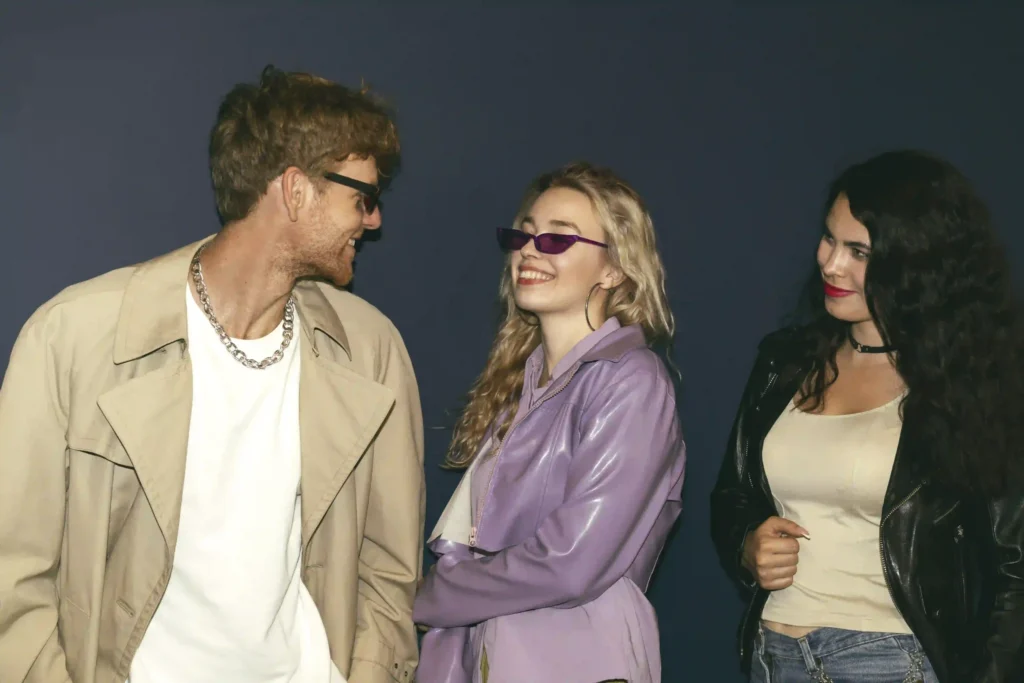
1.Sustainable Chic: Embrace eco-friendly fashion in 2023 with sustainable materials and ethical practices. Look for upcycled garments and innovative, planet-friendly fabrics. 2.Tech-Forward Styles: Stay on-trend with smart clothing featuring embedded sensors and LED lights. Explore augmented reality elements for a fashionable and functional wardrobe. 3.Gender-Fluid Vibes: Step away from traditional norms with gender-fluid clothing lines. Express your individuality through styles that transcend conventional expectations. 4.90s Comeback: Experience a blast from the past with oversized blazers, cargo pants, and chunky sneakers. Revive grunge, minimalism, and streetwear inspired by the iconic ’90s era. 5.Maximalist Minimalism: Achieve a modern twist on the classic minimalist look. Combine clean lines with bold accessories for a sophisticated and striking ensemble. 6.Prints and Patterns Galore: Make a statement with bold prints and eye-catching patterns. Experiment with mixing and matching different prints for a personalized touch. 7.Athleisure Elegance: Elevate your style with athleisure that seamlessly blends comfort and sophistication. Transition from the gym to social events effortlessly with high-end sneakers and luxe activewear. 8.Customization Craze: Celebrate individuality with personalized fashion options. Explore customization services for unique touches like monograms, embroidery, and bespoke designs. Conclusion: Fashion in 2023 is a celebration of diversity, self-expression, and innovation. Whether you’re into sustainable chic, tech-forward styles, or a nod to the ’90s, there’s a trend for every fashion enthusiast. Join the stylish journey ahead and make these trends your own! Instagram Facebook
Types of T-shirts
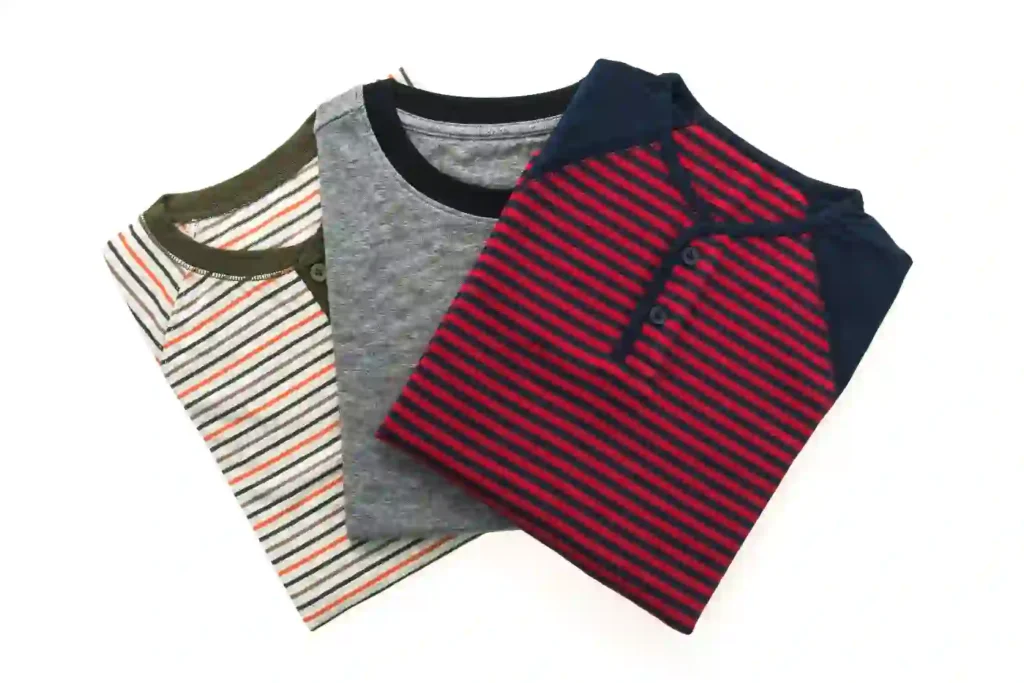
A Comprehensive Guide to Different Types of T-Shirts in 2023″ Introduction: Let’s dive deep into the diverse universe of T-shirt styles that have colored our lives and closets. 1.Classic Crew Neck T-Shirts: Discover the enduring charm of classic crew neck T-shirts – the ultimate wardrobe staple that stands the test of time. Explore the versatility and comfort of this timeless piece, making it the go-to choice for every occasion, from casual hangouts to laid-back Sunday. 2.V-Neck T-Shirts: For those seeking a touch of sophistication in casual wear, the V-neck tee is the answer. Uncover the subtle elegance it brings to your wardrobe, providing a perfect balance between casual and chic. Elevate your style effortlessly with the V-neck vibe. 3.The Allure of Pocket Tees: Delve into the perfect fusion of functionality and fashion with pocket tees. Whether you’re looking to stash essentials or add a playful detail to your outfit, pocket tees are a practical and stylish addition to your T-shirt collection. 4.Raglan Sleeves: Explore the sporty side of T-shirts with raglan sleeves, featuring distinctive diagonal seams that bring an athletic edge to your look. Ideal for impromptu sports games or channeling your inner sports enthusiast, raglan sleeves are a must-have for a dynamic wardrobe. 5.The Appeal of Henley Tees: Experience laid-back elegance with Henley tees, offering an effortlessly cool vibe with their buttoned neckline and relaxed silhouette. Perfect for casual adventures, these T-shirts add a touch of charm to your everyday look. Conclusion: As we celebrate this one-year milestone together, let’s continue to embrace the diversity of T-shirts, finding comfort and style in the threads that weave the fabric of our daily lives. Here’s to another year of T-shirt adventures – may your closets be filled with an abundance of soft, stylish, and oh-so-comfortable tees! Cheers to unlocking the language of comfort and style!
History of INDIAN clothing
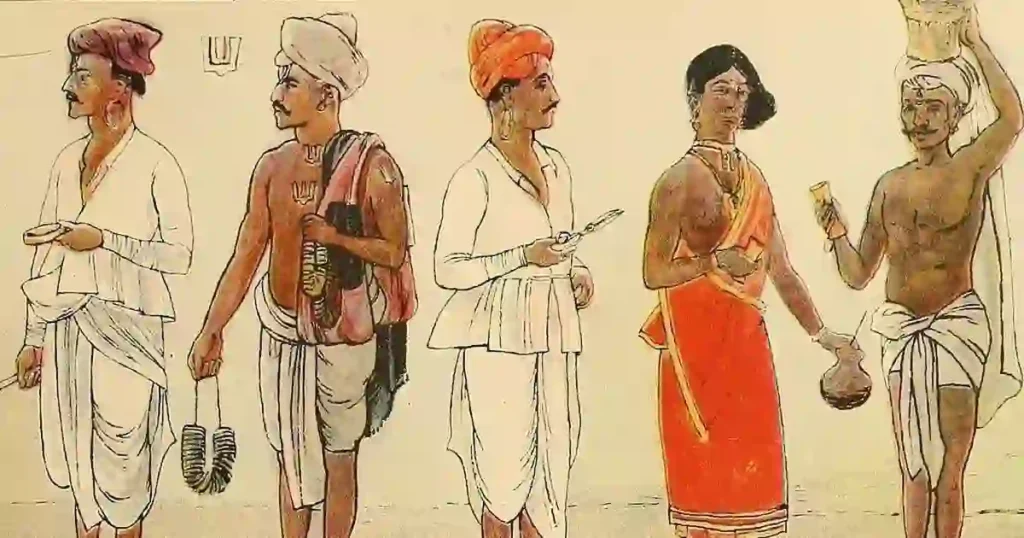
Shop now History of INDIAN clothing India, a land steeped in culture and diversity, boasts a clothing history as vibrant and captivating as its people. From ancient times to the present, Indian fashion has been shaped by a multitude of factors, including climate, customs, and religious beliefs. Let’s embark on a journey through time to explore the intriguing evolution of clothing in India and witness the remarkable fusion of tradition and modernity. Ancient Clothing: In ancient India, clothing served as a reflection of social status and cultural identity. Draped garments like the dhoti for men and the timeless sari for women were prevalent. Weaving techniques and textiles of the Indus Valley Civilization, Mauryan, and Gupta empires added intricate beauty to the attire. Medieval Period: During this era, Islamic influences from Persia blended with Indian styles, giving rise to the enchanting anarkali and majestic sherwani. Luxurious fabrics like silk and brocade took center stage, adorned with stunning embroidery techniques such as zardozi. Colonial Era: The arrival of European powers left an indelible mark on Indian clothing. Western-style garments were introduced, and traditional clothing was adapted to suit colonial preferences. The iconic dhoti-kurta ensemble and the graceful saree emerged as symbols of Indian identity. Independence and Post-Independence: The struggle for independence in the early 20th century revolutionized Indian fashion, with clothing becoming a powerful expression of nationalism. Mahatma Gandhi championed the use of handloom textiles and khadi, igniting a resurgence of indigenous fabrics. Post-independence, a fusion of traditional and modern elements shaped the fashion landscape. Regional Diversity: India’s clothing traditions reflect its rich regional diversity. From the vibrant Punjabi attire to the colorful Bandhani of Gujarat, the intricate embroidery of Rajasthan, the graceful Kanjeevaram silk of Tamil Nadu, and the artistic Phulkari of West Bengal, each region boasts distinct styles and techniques. Contemporary Fashion: In the 21st century, Indian fashion has gained global recognition. Visionary designers seamlessly blend traditional motifs with modern aesthetics. Bollywood fashion sets trends and influences mainstream styles. Sustainable fashion initiatives and the revival of indigenous textiles are transforming the industry.
Top 10 T-shirt brands
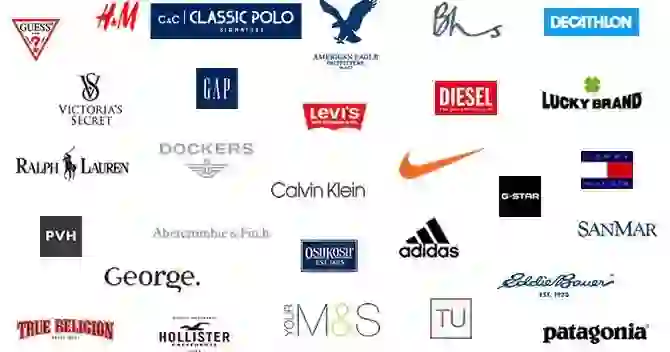
Shop now Top 10 T-shirt brands T-shirts are an essential part of everyone’s wardrobe. They are comfortable, versatile, and always in style. In this blog post, we’ll introduce you to the top 10 t-shirt brands known for their quality, design, and popularity. Let’s dive in! Nike: Famous for sportswear but also offers stylish t-shirts. Innovative fabrics for superior comfort and moisture-wicking. Iconic branding and a variety of designs suitable for sports and casual wear. Levi’s: A legendary denim brand that also excels in t-shirts. Known for quality craftsmanship and classic American style. Iconic logo designs and a wide range of colors for timeless looks. Ralph Lauren: Symbolizes sophistication and timeless elegance. Impeccable tailoring and premium fabrics. From Polo Ralph Lauren emblems to understated designs, their t-shirts add refinement to any outfit. Hanes: Trusted for decades as a basic t-shirt brand. Exceptional comfort and durability. Affordable and reliable t-shirts for everyday wear. Supreme: A streetwear phenomenon with limited-edition releases. Bold designs and eye-catching graphics. Unique and statement-making pieces, though they can be hard to obtain. Uniqlo: A Japanese brand offering affordable, high-quality apparel. Simple and versatile t-shirts with functional design. Comfortable fabrics and timeless styles for any occasion. Everlane: Committed to transparency and sustainability. Premium t-shirts made from ethically sourced materials. Clean and minimalist aesthetic for those seeking ethical fashion. Adidas: Renowned sportswear brand for athletic performance and casual wear. Iconic three-stripes logo and innovative fabric technologies. Breathable and mobile designs combining sport and style. The North Face: Known for outdoor gear, including t-shirts. Moisture-wicking properties for outdoor activities. Recognizable logo and a range of styles and colors for outdoor enthusiasts. Apester: Best Known for customized T-shirt with High Quality. Provides Designers for Designing your Own Thoughts. Provides Customization on T-shirt, Oversized T-shirts, hoodies. Also Provides for Events. Have a great day ahead!
How T-shirts are dyed?
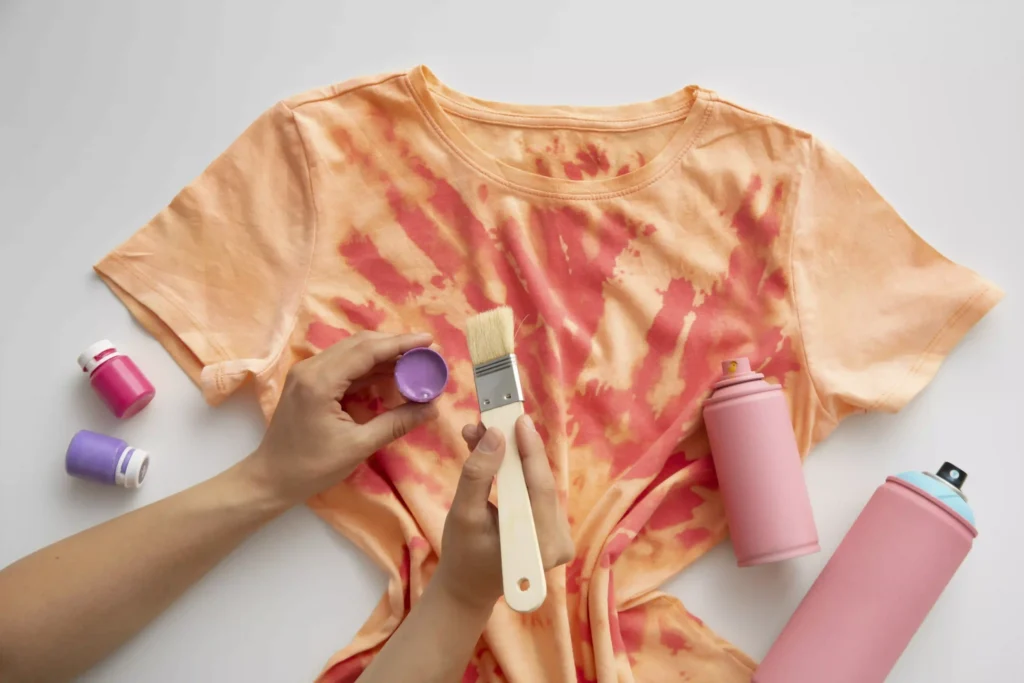
Shop now How T-shirts are dyed? Have you ever wondered how these colorful t-shirts are made? In this blog post, we’ll take a look at the process of dyeing t-shirts and the various techniques used in the industry. T-shirts are dyed by immersing the fabric in a dye bath that contains the dye and other chemicals that ensure the dye sticks to the fabric. The details of the dyeing process depend on the type of dye used and the color and effect desired. Reactive dyes are often used in the production of T-shirts. They combine with the fibers of the fabric and produce bright, long-lasting colors. To dye a T-shirt with reactive dye, the fabric is first pretreated with a solution of alkali and other chemicals. Then it is immersed in the dye bath, which contains the reactive dye and other chemicals such as salt and soda ash. Finally, the fabric is rinsed and washed to remove excess dye and fix the color. Pigment dyes are another type of dyes used in the production of T-shirts. They settle onto the fibers of the fabric, giving pigment-dyed fabrics a softer, more classic look. To dye a T-shirt with pigment dyes, the fabric is pre-treated with a solution of chemicals to make the dye adhere to the fabric. Then the fabric is dipped into the dye bath, which contains the pigment dye and other chemicals such as resins and fixatives. Finally, the fabric is washed and dried to fix the dye. Special effects and techniques can be used to achieve unique looks and textures. Examples include tie dyeing, ombre dyeing and discharge dyeing. Tie-dyeing involves twisting and binding the fabric in various ways before dyeing it, creating a distinctive pattern of color and white. Ombre dyeing involves gradually transitioning from one color to another, creating a gradient effect. Discharge dyeing involves removing color from a pre-dyed fabric to create a pattern or design. The process of dyeing t-shirts is complex and multi-step, but it offers endless possibilities for creating unique and vibrant garments. Have a great day ahead !
Discover the Top 10 Cars in India | Must-See List!
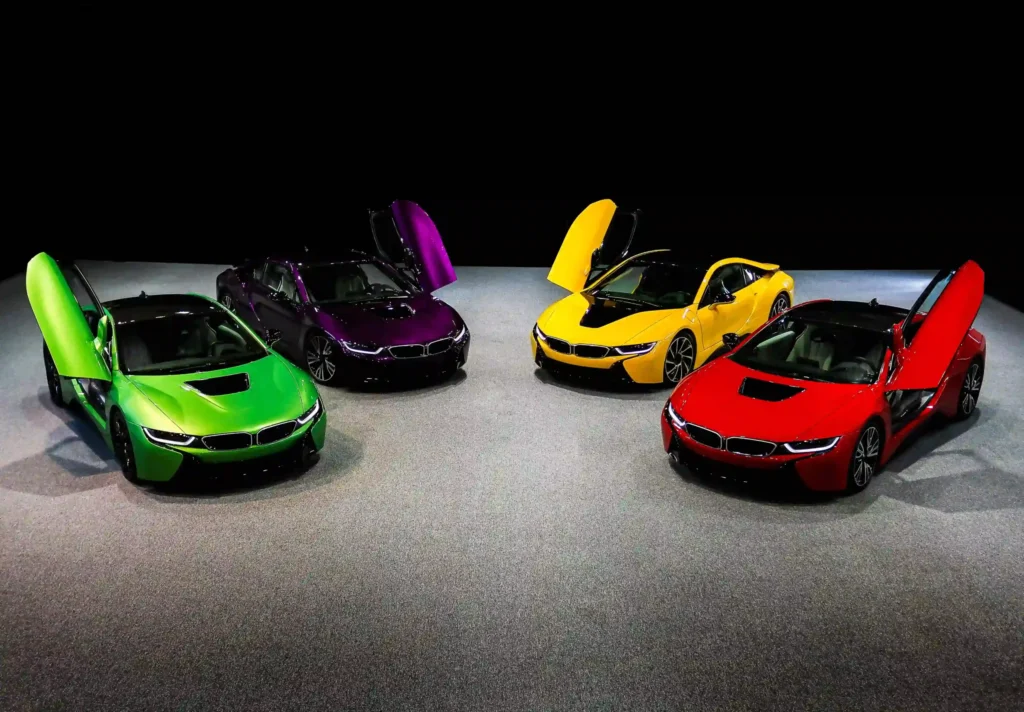
Shop now Top 10 cars in India India is a country where people love cars and there are many brands and models available in the market. However, if you’re looking for the best cars in India, then you’ve come to the right place. In this article, we will discuss the top 10 best cars in India that are perfect for you. Hyundai Creta: The Hyundai Creta is a popular SUV that looks great and is packed with features. It has a comfortable ride and is available with both petrol and diesel engines. Kia Seltos: The Kia Seltos is a compact SUV that has quickly become a favorite among Indian car buyers. It is packed with features, has a spacious cabin, and comes with multiple engine options. Maruti Suzuki Swift: The Maruti Suzuki Swift is a reliable and efficient hatchback that has been one of the best-selling cars in India for years. It is available in both petrol and diesel engines. Hyundai Venue: The Hyundai Venue is a compact SUV that looks great and is packed with features. It is fuel-efficient and is available with both petrol and diesel engines. Mahindra Thar: The Mahindra Thar is a rugged off-road vehicle that has recently been updated with modern features. It has a strong presence on the road and is perfect for those who love to explore the outdoors. Tata Nexon: The Tata Nexon is a compact SUV that has been designed for the Indian market. It offers a spacious cabin, good ride quality, and is packed with features. The Nexon is available in both petrol and diesel engines. Toyota Fortuner: The Toyota Fortuner is a popular SUV that is spacious and comfortable. It comes with multiple engine options and is perfect for those who need a reliable and capable vehicle. Honda City: The Honda City is a mid-size sedan that has been a popular choice among Indian car buyers for years. It offers good ride quality, a spacious cabin, and comes with multiple engine options. Volkswagen Polo: The Volkswagen Polo is a hatchback that offers a good balance between style and performance. It is available in both petrol and diesel engines and offers good fuel efficiency. MG Hector: The MG Hector is a mid-size SUV that has quickly become a popular choice among Indian car buyers. It is packed with features, offers good ride quality, and comes with multiple engine options. Whether you’re looking for a hatchback or an SUV, the Indian market has something for everyone. Choose the car that best suits your needs and budget. Hope you find it useful.
Top 10 ways to print design on t-shirts
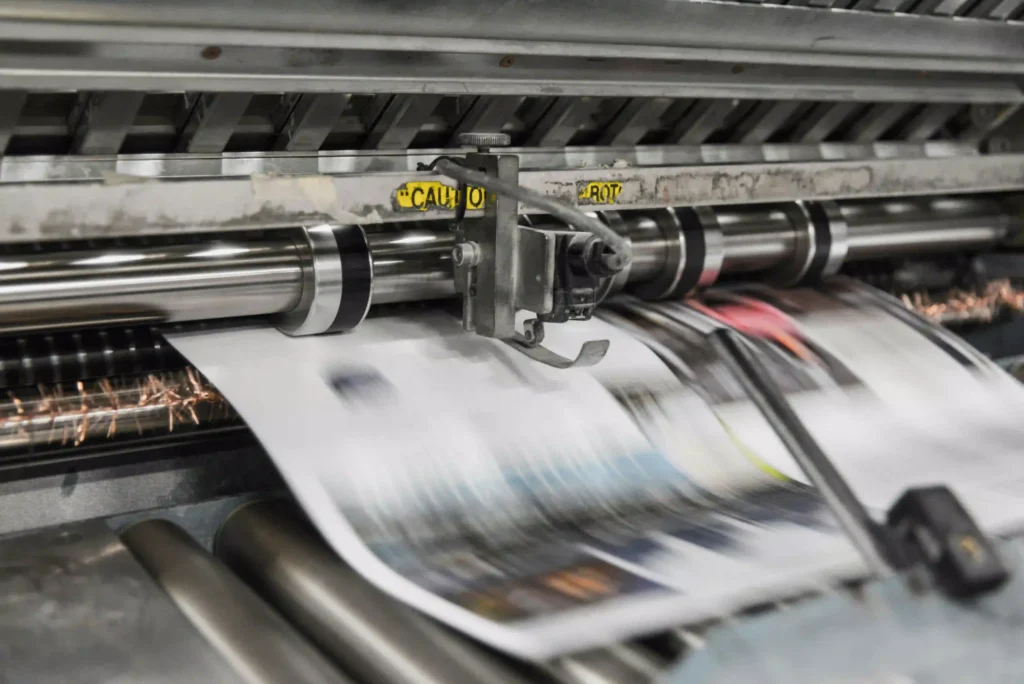
Shop now Top 10 ways to print design on t-shirts T-shirts are a versatile clothing item that can be worn by people of all ages and genders. They can be customized to suit individual preferences and are relatively easy to make. In this blog post, we will explore the top 10 ways to make t-shirts. Screen Printing Screen printing is a popular method of making t-shirts, especially for bulk orders. This method involves creating a stencil or template on a fine mesh screen and using it to apply ink to the fabric. The result is a high-quality print that is durable and long-lasting. Iron-on Transfer Iron-on transfer is a quick and easy way to make t-shirts at home. This method involves printing a design onto transfer paper and ironing it onto the fabric. Iron-on transfers can be purchased at craft stores or printed at home using a printer. Vinyl Heat Transfer Vinyl heat transfer is a similar method to iron-on transfer but uses vinyl material instead of transfer paper. The vinyl is cut into the desired shape and then applied to the fabric using a heat press. This method is ideal for creating simple designs with bold lines. Sublimation Printing Sublimation printing is a relatively new method of making t-shirts that involves transferring ink onto the fabric using heat. The ink is first printed onto a transfer paper and then transferred to the fabric using a heat press. This method is ideal for creating designs with intricate details and vibrant colors. Tie-Dye Tie-dye is a popular method of making t-shirts that involves twisting and tying the fabric before dyeing it. This method creates unique and colorful designs that are perfect for summer or festival wear. Embroidery Embroidery is a traditional method of decorating clothing that involves stitching designs onto the fabric using a needle and thread. This method is ideal for creating intricate and detailed designs on t-shirts. Applique Applique is a method of decorating clothing that involves attaching a piece of fabric or design onto the fabric using stitching or adhesive. This method is ideal for creating designs with different textures and patterns. Fabric Paint Fabric paint is a versatile medium that can be used to create designs on t-shirts. This method involves painting the fabric directly using a brush or stencil. Fabric paint can be purchased at craft stores or made at home using acrylic paint and fabric medium. Stenciling Stenciling is a simple method of creating designs on t-shirts using a stencil and spray paint. The stencil is placed on the fabric and then sprayed with paint, creating a crisp and clean design. Bleaching Bleaching is a method of creating designs on t-shirts by removing the color from the fabric using bleach. This method involves applying bleach to the fabric using a brush or stencil and then washing it out. Bleaching creates unique and edgy designs that are perfect for streetwear. In conclusion, there are many different ways to make t-shirts, from traditional methods like screen printing and embroidery to newer methods like sublimation printing and vinyl heat transfer. Each method offers unique advantages and can be customized to suit individual preferences. With a little creativity and some basic supplies, anyone can make their own t-shirts at home.
How T-shirts are made?
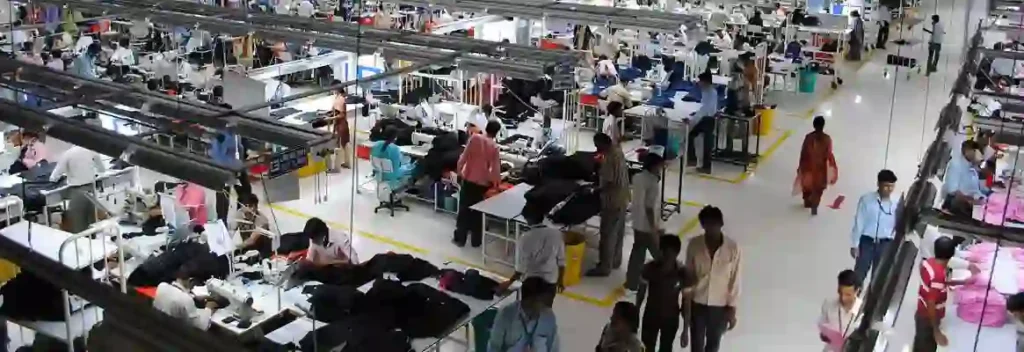
Shop now How T-shirts are made? T-shirts are a staple in most people’s wardrobes, but have you ever wondered how they’re made? In this blog post, we’ll take a closer look at the process of t-shirt manufacture. Step 1: Design The first step in making a t-shirt is designing it. This is where the creativity comes in. A designer comes up with a design, either by hand or using computer software, and creates a mockup of what the t-shirt will look like. Step 2: Fabric selection Once the design is finalized, the next step is to select the fabric. T-shirts are typically made from cotton, but can also be made from other materials like polyester or a blend of different fabrics. The fabric is selected based on the desired texture, weight, and durability of the t-shirt. Step 3: Cutting After the fabric is selected, the next step is to cut it into the desired shape and size. This is done using a pattern that is created based on the design of the t-shirt. The fabric is laid out flat and the pattern is placed on top. Then, the fabric is cut around the pattern using scissors or a cutting machine. Step 4: Printing If the t-shirt design includes a graphic or text, it will need to be printed onto the fabric. This is done using a screen printing process or a digital printing process. Screen printing involves creating a stencil of the design and then pressing ink through the stencil onto the fabric. Digital printing uses a specialized printer to print the design directly onto the fabric. Step 5: Sewing After the fabric has been cut and printed, it’s time to sew the t-shirt together. The different pieces of fabric are sewn together using a sewing machine. This includes attaching the sleeves, hemming the edges, and sewing the neckband. Step 6: Quality control Once the t-shirt is sewn together, it goes through a quality control process to ensure that it meets the manufacturer’s standards. This includes checking for any defects or flaws in the fabric, ensuring that the stitching is strong and secure, and making sure that the sizing is correct. Step 7: Packaging Finally, the t-shirts are packaged and prepared for shipping. This includes folding the t-shirts, adding any tags or labels, and placing them into boxes or bags for transport. In conclusion, the process of t-shirt manufacture involves several steps, from designing the shirt to packaging it for shipping. Each step is important in creating a quality product that meets the expectations of consumers. Next time you put on a t-shirt, take a moment to appreciate the effort that went into making it.
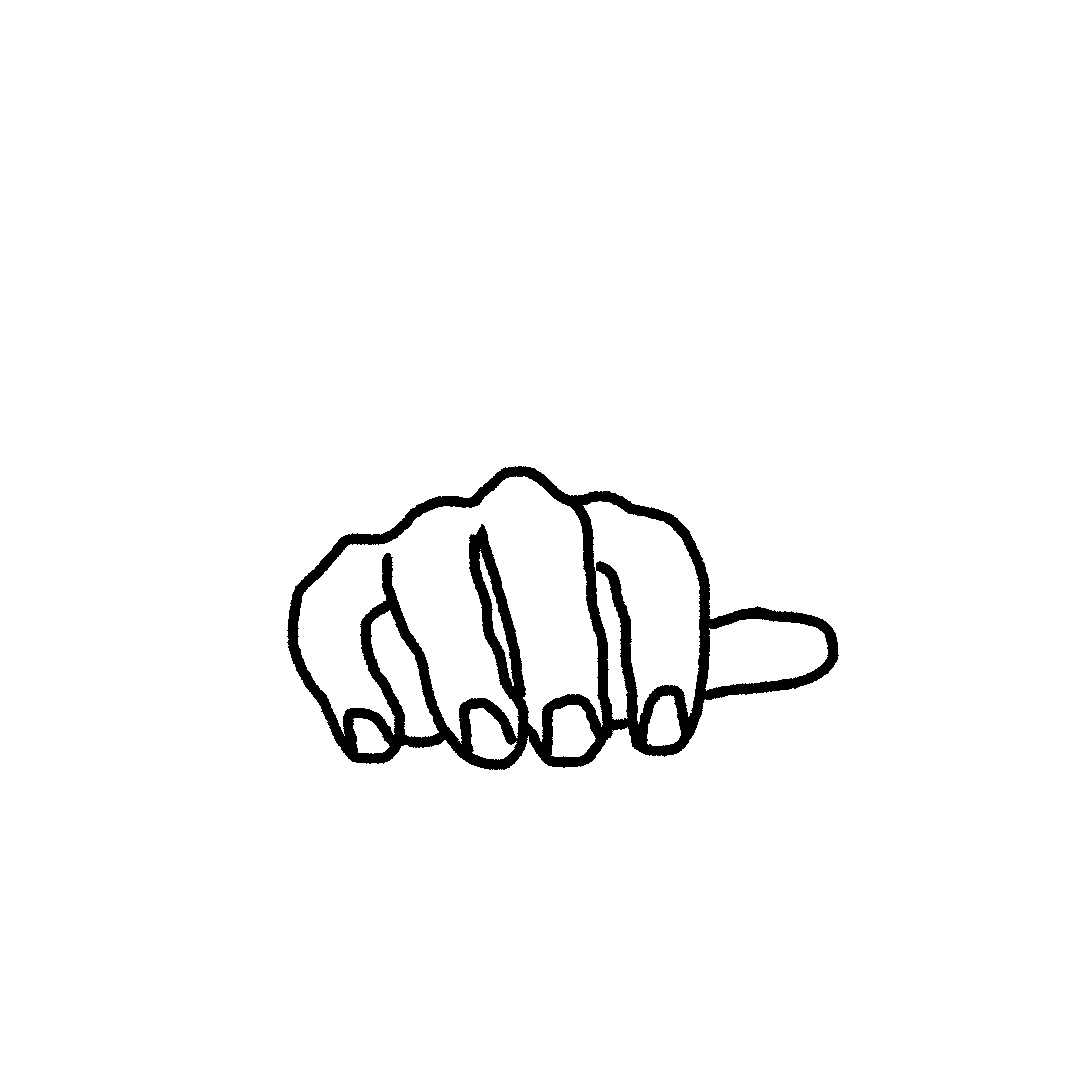 LOADING...
LOADING...

